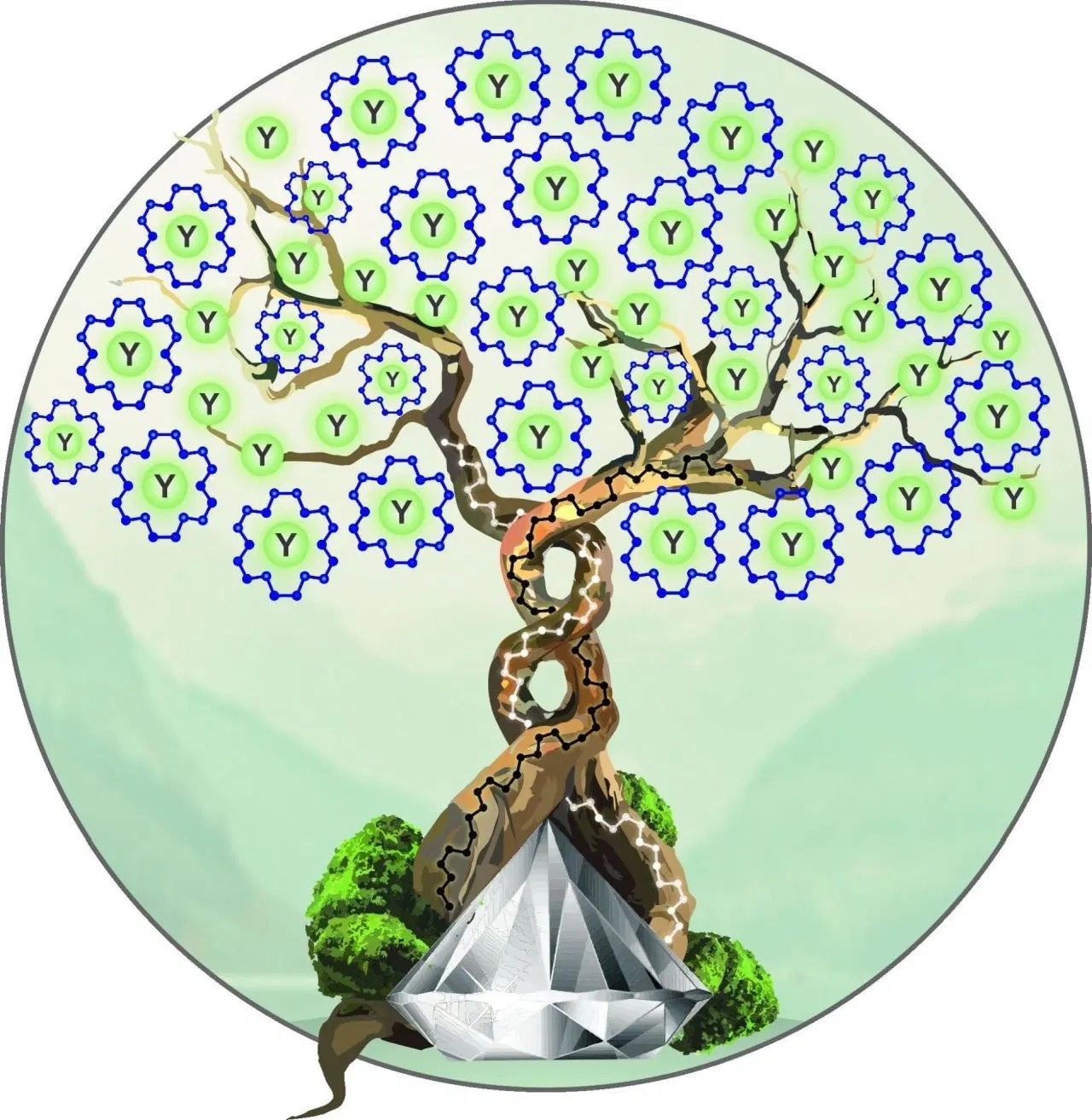Reviewed by Alex SmithAug 4 2022
Under extremely high pressure, scientists from the Universities of Bayreuth and Linköping have created two unexpected molecules containing nitrogen and the rare earth element yttrium. The nitrogen crystal forms seen in the new polynitrides have never been seen before in tests or predicted by theoretical models.
 Unique arrangements of nitrogen compounds in the new YN₆ and Y₂N₁₁ yttrium nitrides created in a diamond stamp cell at a compression pressure of 100 gigapascals. Image Credit: Andrii Aslandukov
Unique arrangements of nitrogen compounds in the new YN₆ and Y₂N₁₁ yttrium nitrides created in a diamond stamp cell at a compression pressure of 100 gigapascals. Image Credit: Andrii Aslandukov
In terms of appearance, they resemble common carbon compound structures. The range of potential nitrogen compounds and their structures is much more than the behavior of nitrogen atoms under normal conditions would suggest, according to the high-pressure synthesis detailed in the journal “Angewandte Chemie.”
In comparison to the structural variety of carbon compounds, very few nitrogen compounds occur in nature. This is primarily due to the exceptionally stable triple bonds that nitrogen atoms form at standard atmospheric pressure. However, during the past two decades, it has been clear that extremely high pressures drastically alter the chemistry of nitrogen.
Professor Dr. Natalia Dubrovinskaia and Professor Dr. Leonid Dubrovinsky’s research groups at the University of Bayreuth have created novel nitrogen compounds (nitrides) with peculiar structures and, in some instances, technologically desirable properties like extremely high energy density or exceptional hardness. The current study expands on this investigation.
The two novel yttrium nitrides, YN6 and Y2N11, were produced in a diamond stamp cell heated by a laser. The novel compounds were created via chemical interactions between yttrium and nitrogen atoms at a temperature of roughly 2,700 °C. and a compression pressure of 100 gigapascals (one million times greater than the pressure of the Earth’s atmosphere). The nitrogen atoms are arranged in particular ways in the crystal structures of YN6 and Y2N11:
- Planar, symmetrical ring formations known as macrocycles can be seen in YN6 crystals. In each of these cycles, 18 nitrogen atoms are grouped in a star pattern around a yttrium atom. The placement of the macrocycles on top of one another is kept stable by additional yttrium atoms.
- The nitrogen atoms in Y2N11 crystals, in turn, are arranged in two spiral chains to form a double helix. A structure like this is extremely uncommon in the study of inorganic chemistry. The recently discovered polynitrogenic double helix might work well as a model for creating additional inorganic spiral structures.
The most recent methods of high-pressure synchrotron single-crystal X-Ray diffraction were essential for the discovery of these extremely uncommon structures. Among other things, researchers showed that while there are no covalent links between the nitrogen and yttrium atoms, the nitrogen atoms in the new crystal formations are linked to one another by covalent bonds.
In organic chemistry, ring- and spiral-shaped carbon compounds are of central importance. The few polynitrides known to date in which nitrogen atoms form such structures are all inorganic compounds. However, our high-pressure synthesis of Y₂N₁₁ is further evidence that nitrogen has the fundamental potential to form such structural units.
Andrii Aslandukov, Study First Author and PhD Student, Bavarian Geoinstitute
“Together with our partners at Linköping, we will continue to advance research on such nitrogen compounds at Bayreuth. We may not be far away in high-pressure research from synthesizing polynitrides that exhibit a structural diversity undreamed today. This would be the beginning of a new branch of chemistry: nitrogen organic chemistry at high pressures,” explains Prof. Dubrovinskaia.
Journal Reference:
Aslandukov, A., et al. (2022) Anionic N18 Macrocycles and a Polynitrogen Double Helix in Novel Yttrium Polynitrides YN6 and Y2N11 at 100 GPa. Angewandte Chemie. doi.org/10.1002/anie.202207469.